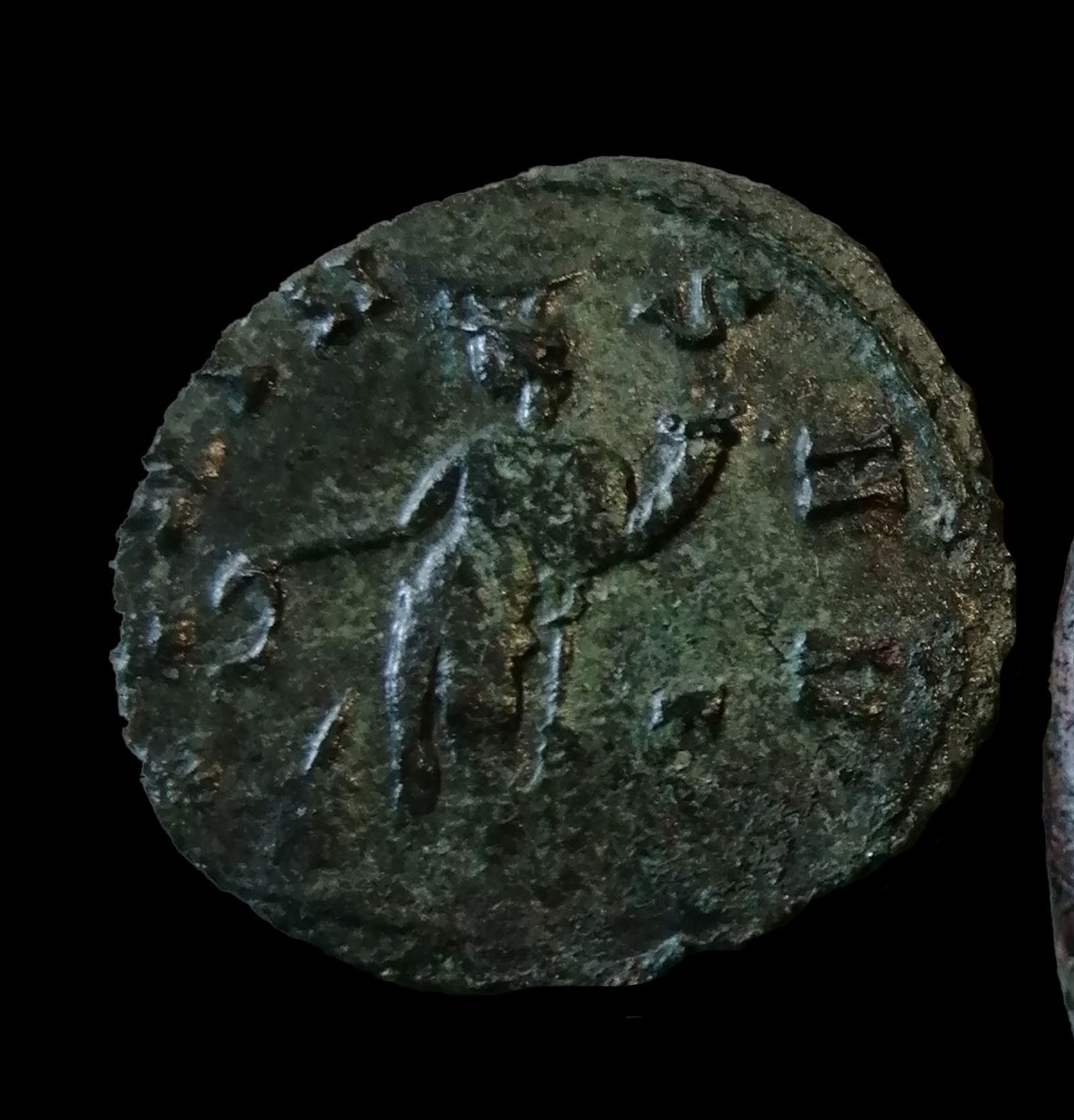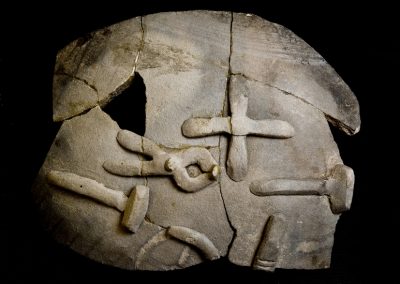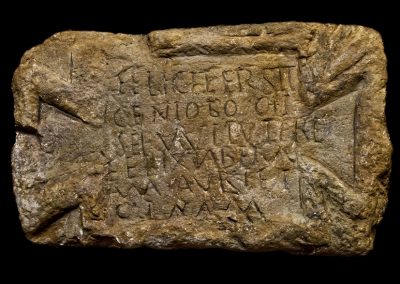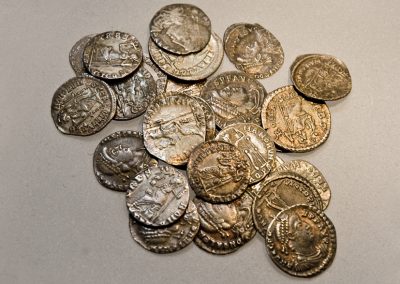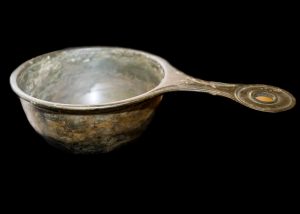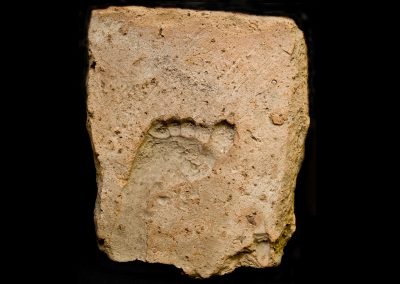A Selection of Roman Coins
Malton Museum, North Yorkshire
Malton Museum holds a collection of Roman coins found in the surrounding area, including a coin hoard from Hovingham Park in Ryedale. The latest coins within the hoard are from the reign of Emperor Honorius, so date from 393-423. This is known to have been a particularly precarious moment towards the end of the Roman Empire.
If you look closely, you can see that the coins are far from being perfect circles. Many of them are extremely misshapen. Roman coins were made by pouring molten metal into a mould, which was then struck with a die to create the design. The imperfect alignment of the design reminds us that they were being mass produced quickly in very large numbers.
Exploring coin iconography and messaging
Coins can give us a range of information, for example about fashions, styles or gods. They also show how particular emperors chose to have themselves depicted. As coins travelled around the Empire, they were an important propaganda tool for sending messages about a regime.
This coin (not part of the hoard) is from the reign of Antoninus Pius, the emperor from 138 – 161 CE who gave his name to the Antonine Wall in Britain and was the adopted son of the more famous Hadrian. The front or obverse side shows the emperor’s profile but you can see the reverse here which depicts the Goddess Aequitas or Equity.
Aequitas was the personification of fairness in the eyes of the law. She is often shown with scales and represents the importance of treating people honestly – a particularly good symbol for a coin and part of the emperor’s propaganda.
Aging and oxidation of copper
If you look closely at the surface, you can see the coin’s patina – a surface layer that has developed through age. The coin has begun to turn a green colour, also known as ‘verdigris’, the name for the blue-green patina formed on copper due to oxidation.
Activity – Design your own coin, sending a message about yourself. You can use the PDF worksheet to help…
Worksheet
Talking Points
What do you picture when you imagine ancient coins? Do the coins look how you would expect?
Compare the coins with modern day coins. How are they similar? How are they different?
Do you think the coins would feel rough or smooth to touch?
Why do you think coins sometimes develop a patina? Have you seen metals discolour in that way before?
What symbols would you choose to put on a coin if you were a monarch or emperor?
How would you feel if you found a coin like this? How would you react?
Vocabulary
Propaganda: Information used to promote a cause, which may be biased or misleading
Verdigris: a blue or green patina or encrusted surface caused by oxidation (combining in a chemical reaction with oxygen)

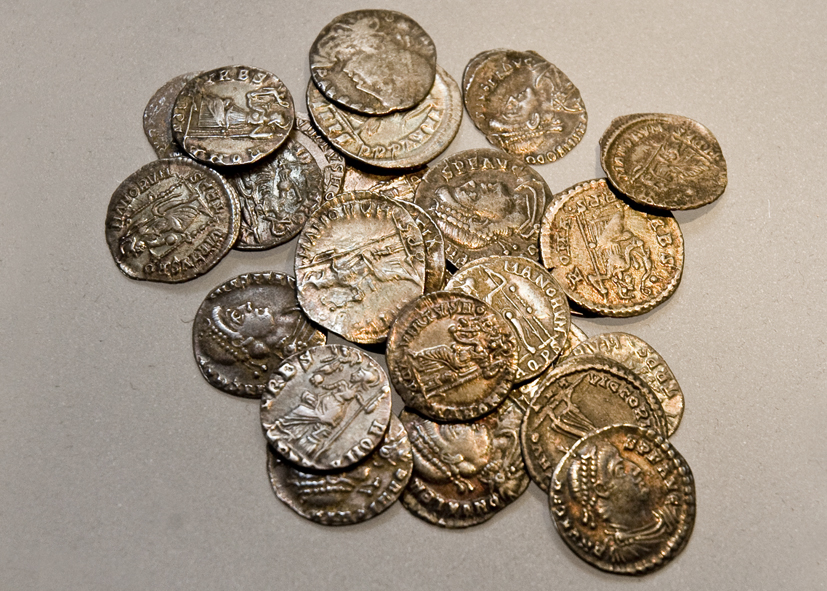
In the Classroom
Role play
Imagine finding the coin from Emperor Antonine’s reign and telling a friend who doesn’t believe that it is Roman.
In pairs, practise this scene. How would you persuade them? What information could you give?
Design
What would a coin with you as emperor look like? What message would you use your coin to send about your reign?
Worksheet
Hands on History
Malton Museum runs ‘Roman Legacy’ workshops in schools across the region and you can also borrow an object loan box to explore the Romans in Ryedale.
You can buy replica Roman coins too.
Museum Location
Explore more Roman objects

